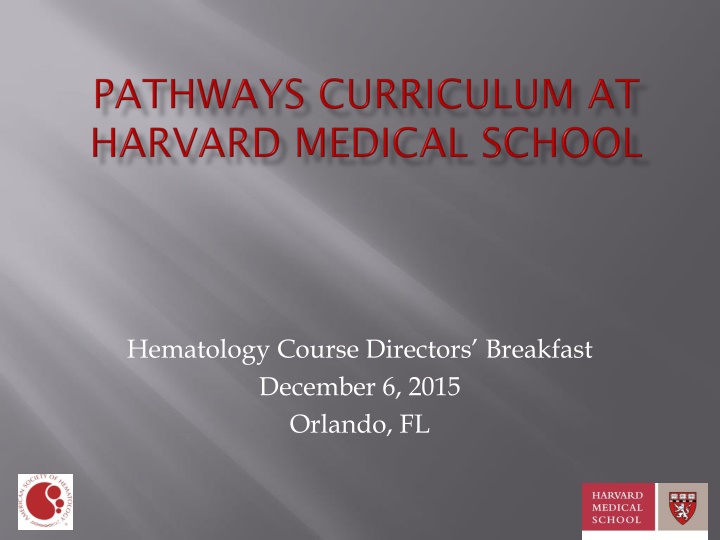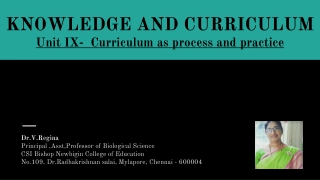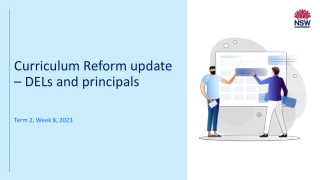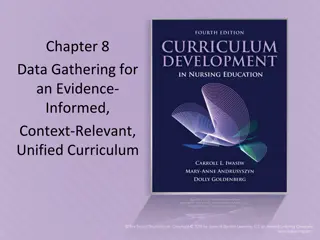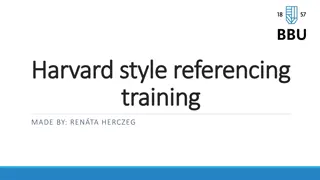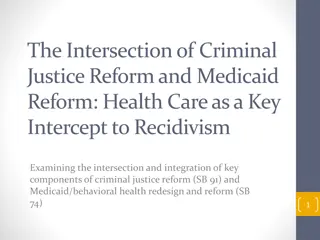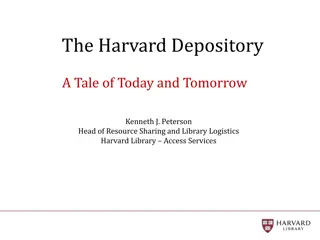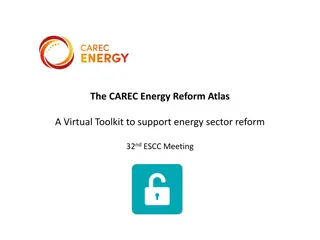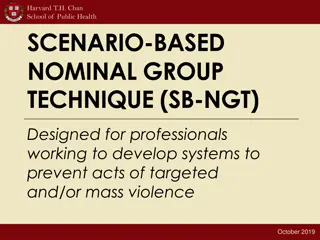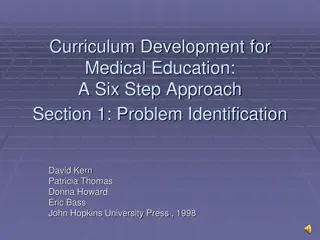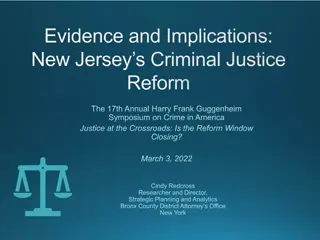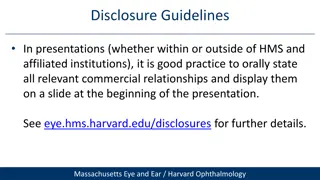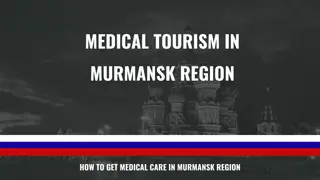Rationale for Curriculum Reform at Harvard Medical School
Delve into the rationale behind broad curriculum reform at Harvard Medical School, shedding light on anticipated changes in hematology teaching. Explore potential opportunities and obstacles, emphasizing the need for structural adjustments, new learning spaces, enhanced assessment methods, and faculty development initiatives to enhance student problem-solving skills and critical thinking abilities.
Download Presentation

Please find below an Image/Link to download the presentation.
The content on the website is provided AS IS for your information and personal use only. It may not be sold, licensed, or shared on other websites without obtaining consent from the author.If you encounter any issues during the download, it is possible that the publisher has removed the file from their server.
You are allowed to download the files provided on this website for personal or commercial use, subject to the condition that they are used lawfully. All files are the property of their respective owners.
The content on the website is provided AS IS for your information and personal use only. It may not be sold, licensed, or shared on other websites without obtaining consent from the author.
E N D
Presentation Transcript
Hematology Course Directors Breakfast December 6, 2015 Orlando, FL
Provide rationale for broad curriculum reform at Harvard Medical School Delineate anticipated changes for hematology teaching Explore potential opportunities and obstacles
No conflicts of interest to report I am not (yet) a course director Tutorial leader for several years Transitioning into a course co-director role The hematology course has not (yet) been changed New course will run early 2016
Slides created with input from HMS leaders Dr. Richard Schwartzstein, leading curriculum reform Dr. Barbara Cockrill, Director of Facutly Development Dr. Edward Hundert, Dean for Medical Education Guidance from Drs. Matt Heeney and Scott Lovitch
Summary of major changes Improve the way students think and problem-solve Structural/sequence changes to reorganize exposures New learning spaces that will facilitate attainment of goals Improvements in assessment and feedback Faculty development
If its not broken, why fix it? Our students are mostly happy and successful USMLE passage rates Residency match
Surface Learning -- Knowledge abundant but disorganized -- New info not linked to previous knowledge -- Focus on memorization and recall -- Learns concepts and facts without reflection
Concrete Concrete Experience Experience Reflection Reflection Experimentation Experimentation Reflection Reflection Abstract Abstract Conceptualization Conceptualization David A. Kolb. Experiential Learning: Experience as the source of learning and development (1984) David A. Kolb. Experiential Learning: Experience as the source of learning and development (1984)
Optimal learning requires time for all four steps Rushed learners often skip reflection and abstract conceptualization Oscillation between experience and experimentation is far less effective Concrete Concrete Experience Experience Experimentation Experimentation Reflection
Decreased retention Basic science left behind, not integrated Difficulty transferring knowledge to new contexts Difficulty reasoning through an unknown problem Students poorly prepared; wait to see what we say is important and then study that material Lecture attendance is poor
New curricular goals Increased active learning Higher expectations and accountability for preparation and learning Shift bulk of transfer of content from faculty to self- study and small group study Emphasize creation of frameworks, application of knowledge and problem solving/analysis in teacher- student interactions FOCUS LESS ON WHAT AND MORE ON HOW / WHY
-- Relates new knowledge to previous knowledge -- Content organized into coherent whole -- Focus on problem-solving; apply, analyze -- Link concepts/principles to everyday experience Modified fromHarasym et al. 2008
Structural changes 14 months basic science (reduced) Early clinical experiences integrated Aim to prepare students for clerkship only Include principles of biomedical, population, and social sciences Core clerkships begins earlier Advanced sciences post clerkship
Reduced (eliminated) lectures Divide the class into 4 sections Use CBCL Core faculty HMS Academy
Support of Aerobic Metabolism Homeostasis 1 Cardiovascular, Respiratory, Hematology Anatomy/histology Physiology Pathophysiology/pathology Pharmacology Radiology Nutrition
MONDAY 3/7 TUESDAY 3/8 WEDNESDAY 3/9 THURSDAY 3/10 FRIDAY 3/11 8:00-8:50 Small groups: review and discuss assignments from prior night 8:00-8:50 Small groups: review and discuss assignments from prior night 8:00-8:50 Small groups: review and discuss assignments from prior night 8:00-9:00 Quiz 3 Quiz 3 Learning Studios 9:00-9:50 Intro to hemostasis 9-9:50 Thrombophilia and Anticoagulants 9:00-10:00 Topic TBD 9:05-9:50 Small groups: review and discuss assignments from prior night Amphitheater Neufeld/ Neufeld/Trenor Trenor Amphitheater K. K. Bauer Bauer Amphitheater TBD TBD 10:00 -11:10 ITP, Plt function, vWD, DIC mini-cases 10:00-11:10 Pulmonary embolism, DVT, Factor-V Leiden mini-cases 10:10-11:20 ECG session supraventricular arrhythmias and hypertrophy 10:00-11:10 Pulmonary Hypertension POM POM Amphitheater Barbara Barbara Learning Studios Barbara Barbara Learning Studios Matt & Rachael Matt & Rachael Learning Studios Dara Dara 11:20-12:30 Hemophilia, Inhibitor mini- cases 11:20-12:30 Anticoagulation in cardiac disease 11:30-12:30 Ventricular arrhythmias and Pharmacological treatment mini-cases 11:20-12:30 Pulmonary Hypertension RV function-heart failure mini-cases; Review HF concepts in general Learning Studios Dara Dara & Mary & Mary Learning Studios Matt & Rachael Matt & Rachael Learning Studios Dara Dara Learning Studios Barbara and Mary Barbara and Mary Assignment: Valvular heart disease Assignment: ECG and supraventricular and ventricular arrhythmias; pharmacological treatment of arrhythmias 1:30-2:30 Patient clinic: hemophilia Assignment: Pulmonary infections; antibiotics; pericardial disease Amphitheater Matt Matt Assignment: PE and pulmonary hypertension; endocarditis
CBL PBL TBL Peer instruction
Work from Home (night before) Reading/vide os Readiness Assessment (MCQ) Thought questions Case vignette Individual hypotheses Small group learning Case vignette based Group hypotheses Faculty facilitation May involve splitting into even smaller groups that report back Morning Meeting Students discuss responses to questions Small group No faculty presence Lecture as large group
Students direct their own learning and remain active Greater preparation Increased integration leads to understanding of the big picture Decreased dependence on lectures Opportunities for faculty to gain new skills Videos Small group facilitation
Students are less experienced In hematology course In clerkships Faculty development is never easy Decreasing number of faculty Time commitment How much preparatory work is the right amount?
Personal/behavioral - curiosity, empathy, reflective, respectful, committed to scholarship and inquiry Learning environment Knowledge Critical Thinking Team function Clinical integration into PCE
Instruments to assess curiosity, empathy, burnout NBME style exam Critical thinking cases Simulation Surveys OSCEs Assessment by PCE directors
